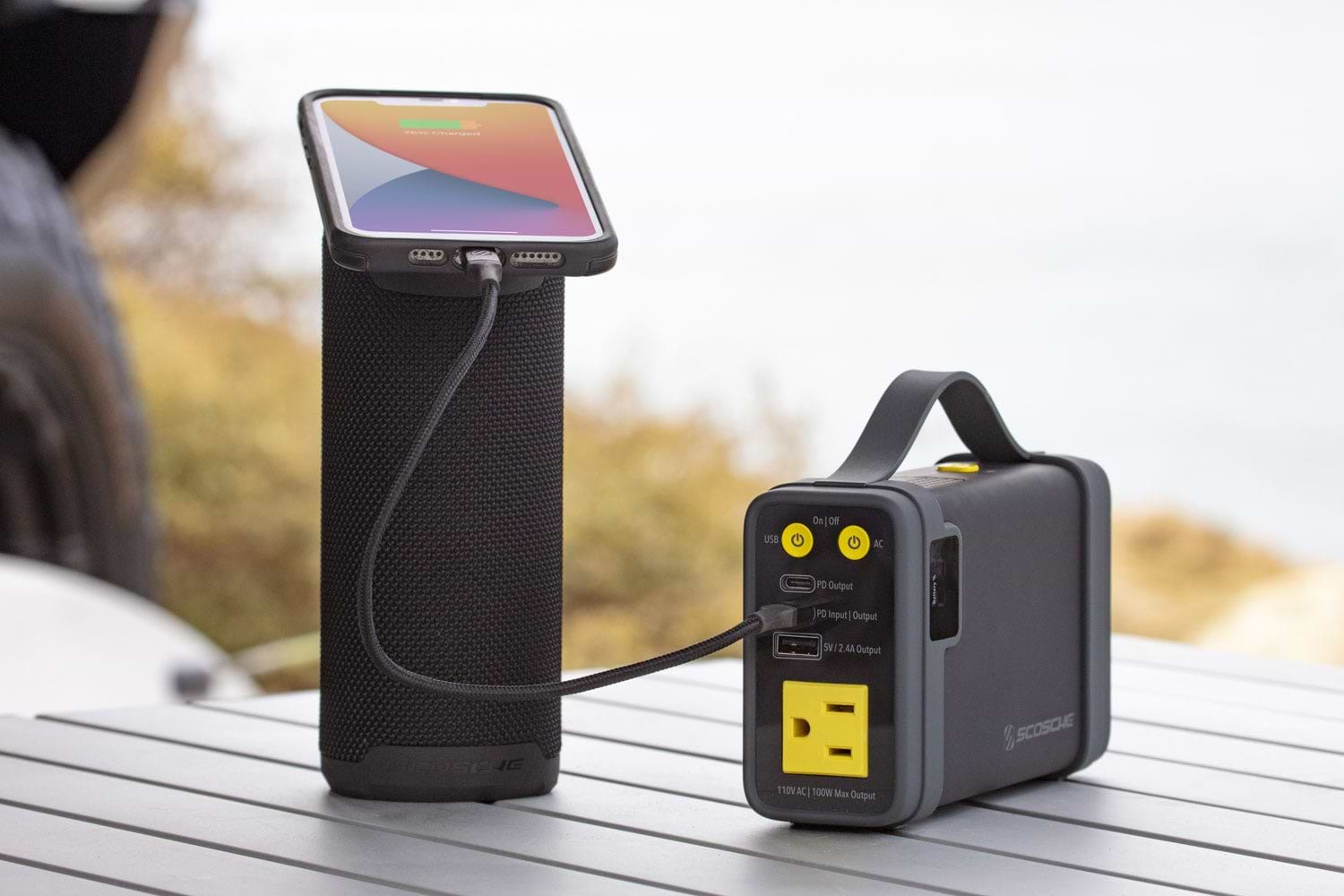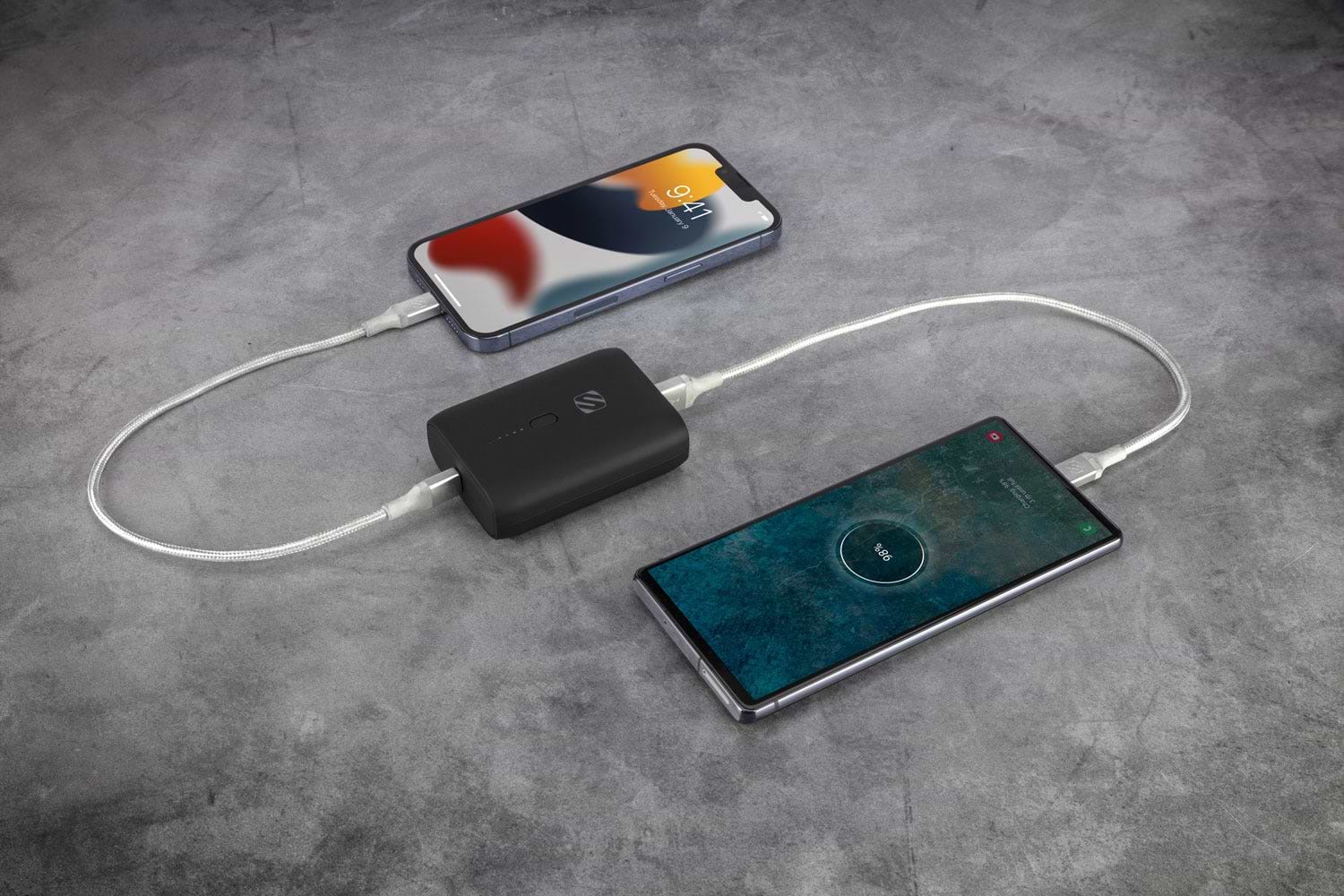Resetting a Power Bank: Troubleshooting Guide

In this troubleshooting guide, we will explore the process of resetting a power bank to address common issues that users may encounter. A power bank is a convenient accessory that provides portable power for charging electronic devices on the go. However, like any electronic device, power banks are not immune to problems.
If you find that your power bank is not functioning as expected, a reset may help resolve the issue.
Understanding the Basics of a Power Bank
Before we delve into the troubleshooting steps, let's first understand the fundamentals of a power bank.
A power bank, also known as a portable charger, is a compact battery pack that stores electrical charge. It allows you to charge your devices, such as smartphones, tablets, or smartwatches, when you don't have access to a power outlet.
Power banks come in various sizes and capacities, ranging from small pocket-sized ones that can provide a single charge to larger ones that can charge multiple devices multiple times. The capacity of a power bank is measured in milliampere-hours (mAh), which indicates how much charge it can hold. The higher the mAh rating, the more charge the power bank can store.
When it comes to charging your devices, power banks utilize different types of ports, such as USB-A, USB-C, or micro USB. USB-A ports are the most common and can be found on most power banks. USB-C ports, on the other hand, are becoming more prevalent as they offer faster charging speeds and can even charge laptops and other high-powered devices.
How Does a Power Bank Work?
A power bank works by storing electrical energy in its internal batteries when it is connected to a power source. This power source can be a wall outlet, a computer, or even a solar panel if the power bank has that capability. The power bank converts the electrical energy from the power source into chemical energy and stores it in its batteries.
When you connect your device to the power bank, it transfers the stored charge to your device, effectively charging it. The power bank acts as a bridge between the power source and your device, ensuring a steady flow of electricity without any fluctuations or surges that could potentially damage your device.
Some power banks also come with additional features, such as LED indicators to show the remaining charge, built-in cables for convenience, or even wireless charging capabilities. These features add extra functionality and make the power bank more versatile.
It's important to note that power banks have a limited number of charge cycles. A charge cycle is defined as the process of charging a power bank from 0% to 100% and then discharging it back to 0%. Over time, the capacity of the power bank may decrease, and it may not hold as much charge as it did when it was new. However, with proper care and maintenance, a power bank can last for several years.
In conclusion, power banks are essential accessories for anyone who relies heavily on their electronic devices. They provide a convenient and portable way to charge your devices on the go, ensuring that you never run out of battery power when you need it the most.
Common Issues with Power Banks
Now that we have a basic understanding of power banks, let's explore some common issues that users may encounter.
Power banks have become an essential accessory for many people, providing a convenient way to charge their devices on the go. However, like any electronic device, power banks are not immune to issues that can affect their performance and functionality.
Not Charging Properly
If your power bank doesn't seem to charge your devices properly, there could be several reasons for this. It could be due to a faulty charging cable, a loose connection, or an issue with the power bank's circuitry. Sometimes, the problem may lie with the device you are trying to charge rather than the power bank itself. It's important to troubleshoot and identify the root cause of the issue to ensure efficient charging.
One common cause of improper charging is using a low-quality or incompatible charging cable. Power banks require a cable that can handle the required power output, so using a cable that is not designed for high-capacity charging can result in slow or ineffective charging. Additionally, a loose connection between the cable and the power bank or the device can lead to intermittent charging or no charging at all.
Another factor that can affect the charging process is the power bank's circuitry. Over time, the circuitry may become worn out or damaged, leading to charging issues. In such cases, it may be necessary to have the power bank repaired or replaced.
Not Holding Charge
Another common issue is when the power bank fails to hold a charge for an extended period. This can be frustrating, especially when you need to rely on your power bank while traveling or away from power sources. Several factors can contribute to this problem.
One possible reason is that the power bank's battery has reached the end of its lifespan. Like any rechargeable battery, power bank batteries have a limited number of charge cycles. After a certain number of cycles, the battery's capacity to hold a charge diminishes, resulting in shorter battery life. In such cases, replacing the battery may be necessary.
Another factor that can affect the power bank's ability to hold a charge is the way it is used. Power banks are designed to be charged and discharged regularly. If a power bank is left unused for an extended period, its battery may lose its capacity to hold a charge. To maintain optimal performance, it is recommended to use the power bank regularly and recharge it when necessary.
Physical Damage
Accidental drops or exposure to excessive heat or moisture can cause physical damage to your power bank, impairing its functionality. Physical damage can disrupt the charging process or even render the power bank completely non-functional.
When a power bank is dropped, the internal components can become dislodged or damaged, affecting its ability to charge devices. Additionally, exposure to extreme temperatures or moisture can corrode the internal circuitry, leading to malfunctions.
To prevent physical damage, it is important to handle your power bank with care and avoid exposing it to harsh conditions. Using a protective case or pouch can provide an extra layer of protection, especially when traveling or carrying the power bank in a bag or pocket.
In conclusion, power banks are a convenient and useful tool for charging devices on the go. However, they can experience common issues such as improper charging, failure to hold a charge, and physical damage. Understanding these issues and taking appropriate measures to address them can help ensure the longevity and optimal performance of your power bank.
Steps to Reset Your Power Bank
If you encounter any of the issues mentioned above, follow these steps to reset your power bank.
Initial Checks
Before performing a reset, ensure that you have ruled out any potential external factors contributing to the issue. Check the charging cable and the connection points for any damages or debris. It's also a good idea to try charging your devices with a different cable or charger to eliminate any potential compatibility issues.
Furthermore, inspect the power bank itself for any signs of physical damage. Look for cracks, dents, or any other abnormalities that may indicate a problem with the internal components. If you notice any such issues, it is recommended to contact the manufacturer or seek professional assistance.
In addition, consider the environment in which you are using the power bank. Extreme temperatures can affect the performance and lifespan of the device. Ensure that you are operating the power bank within the recommended temperature range specified by the manufacturer.
The Reset Process
To reset your power bank, locate the reset button, usually found on the side or bottom of the device. It may be labeled as "reset" or represented by a small pinhole. Press and hold the reset button for a few seconds using a pointed object such as a paper clip or pen tip. This will power down the power bank, effectively resetting its internal systems.
It is important to note that the location and method of resetting may vary depending on the model and brand of your power bank. Refer to the user manual or the manufacturer's website for specific instructions tailored to your device.
During the reset process, it is recommended to disconnect any devices that are currently connected to the power bank. This ensures that the reset is performed without any external interference, allowing the power bank to recalibrate its internal circuitry.
Post-Reset Checks
Once you have performed the reset, reconnect your power bank to a power source and charge it fully. Afterward, attempt to charge your devices again and observe if the issue persists. If the reset was successful, your power bank should now function properly.
However, if the problem persists even after the reset, it may indicate a more complex issue with the power bank. In such cases, it is advisable to contact the manufacturer's customer support or seek professional assistance. They will be able to provide further guidance and troubleshooting steps to resolve the issue.
Remember to keep your power bank clean and free from dust or debris. Regularly inspect the charging ports and clean them with a soft, dry cloth if necessary. This helps to maintain optimal charging performance and prolong the lifespan of your power bank.
Additionally, it is important to use the power bank within its specified capacity limits. Overloading the power bank by connecting devices that require more power than it can provide may result in performance issues or even damage to the power bank itself.
By following these steps and taking proper care of your power bank, you can ensure its longevity and reliable performance whenever you need to charge your devices on the go.


Preventive Measures for Power Bank Issues
While resetting your power bank can address many common issues, it's always better to prevent problems from occurring in the first place.
Proper Usage and Handling
Follow the manufacturer's guidelines for the usage and handling of your power bank. Avoid exposing it to extreme temperatures, water, or other substances that could damage the internal components. Using certified charging cables and adapters can also prevent compatibility issues that might affect the charging process.
Regular Maintenance
Periodically cleaning the charging ports and connectors with a soft brush or cotton swab can help maintain good electrical contact and prevent debris buildup. Additionally, keeping your power bank charged at least once every few months, even if you don't use it regularly, can help extend its lifespan.
When to Seek Professional Help
If despite performing a reset, your power bank continues to exhibit the same issues, it may be time to seek professional assistance.
Persistent Issues After Reset
If the issues persist after performing a reset, there may be underlying hardware or internal circuitry problems that require expert diagnosis and repair. Contact the manufacturer's customer support or take your power bank to an authorized service center for further assistance.
Signs of Severe Damage
Serious physical damage, such as a cracked casing, leaking batteries, or any other visible signs of severe damage, should be addressed immediately. Continuing to use a damaged power bank can pose safety risks. Discontinue its use and seek professional help to assess the extent of the damage and determine the best course of action.
Conclusion
In conclusion, troubleshooting power bank issues can often be resolved by performing a reset. By following the steps outlined in this guide, you can effectively address common problems and restore your power bank's functionality. Remember to take preventive measures to avoid future issues and seek professional help when necessary. With proper care and maintenance, your power bank will continue to provide reliable portable power for your devices.